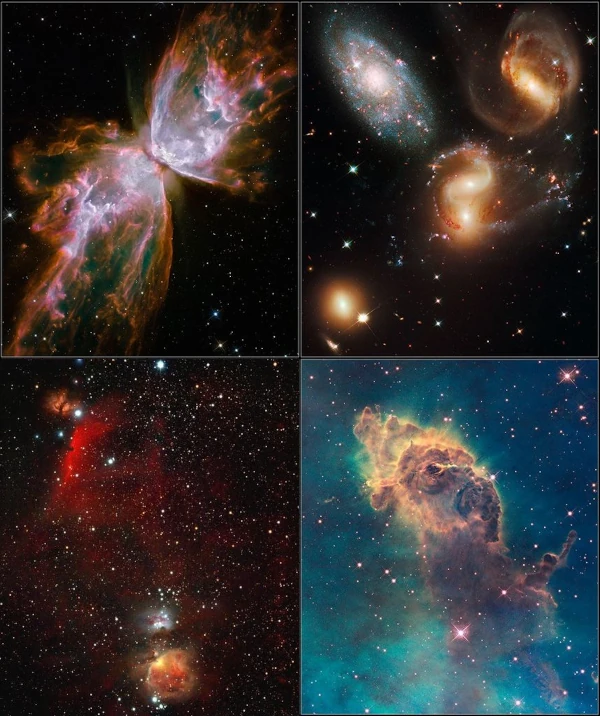
The term nebula historically refers to any fuzzy region observable in the sky, but in modern astrophysics, it refers to an interstellar cloud composed of gas (mainly hydrogen) and dust. These objects can be sites of star formation, remnants of dying stars, or clouds of interstellar matter little or not associated with stars.
There are three main classes of nebulae according to their interaction with light and their energy dynamics:
These objects are characterized by their density (generally low, around \(10^2\) to \(10^6\) particles per cm³), their temperature (\(10^2\) to \(10^4\) K), and their extent (a few light-years to several tens). Their study allows for a better understanding of the life cycles of stars and the structure of the interstellar medium.
| Type | Light interaction | Physical origin | Famous example |
|---|---|---|---|
| Emission nebula | Emit light by ionization (\(H^+\)) | Ionized gas by young massive stars | Orion Nebula (M42) |
| Reflection nebula | Reflect the light of nearby stars | Dust diffusing blue light | Nebula around the Pleiades |
| Dark nebula | Absorption of background light | Dense regions of cold gas and dust | Horsehead Nebula (B33) |
| Planetary nebula | Emission due to ionization by a white dwarf | Ejection of envelopes by a dying star | Ring Nebula (M57) |
Sources: Astronomy & Astrophysics – Ionized Nebulae, ESA – Structure of interstellar clouds, Astrophysical Journal – Reflection Nebulae.
Nebulae play an active role in galactic dynamics. HII regions (ionized zones) trigger shock waves that can cause the birth of new stars. Dark nebulae, on the other hand, are often the precursors of future stellar nurseries. As for planetary nebulae, they enrich the interstellar medium with heavy elements (C, N, O), essential for the formation of planets and organic chemistry.